
Click here to read 10 Hands-On Science & Math Activities to Plan Your Week on Hands On As We Grow
Get your kids learning, and have a total blast, with 10 super simple hands-on science and math activities! These are perfect ways to inspire preschoolers and toddlers with science fun.
Remember that homemade bubble solution I shared?
Super simple, easy to do, and using supplies you already have at home. My kind of activity.
I got the opportunity to check out a copy of the Gryphon House book Hands-On Science and Math by Beth R. Davis, ES, NBCT.
This book is fantastic full of fascinating experiments for young kids to explore hands-on science and math activities.
All these activities are right up my alley. They’re simple, easy setup, and use supplies I already have on hand.
These are ten of the hands-on science and math activities you can find in the book. There are over 40 activities in the book, each with full explanation and photos.
10 Hands-On Science and Math Activities to Plan Your Week
We loved these hands-on science and math activities, and wanted to share a sneak peek with you! If you want more info, make sure you grab a copy of Beth’s book!
In the book, you’ll find discussion points and explanations to help your children grasp the concept better. There are even extension ideas to keep the fun going!
I love it!
1. Classic Sink or Float Activity
A classic Sink or Float activity is a great way for kids to create a theory, and then test it!
Fill a tub with water and collect various items to test. You can see how we did a sink or float activity with the kids’ toys.
You can take it a step further though and have empty bowls with “Sink” and “Float” written on them. Sort the objects after they’ve been tested and then graph them. A graph is found in the book.
2. Do Some Tree-Trunk Explorations!
I’ve seen blocks made out of tree trunks and branches but never knew really what to do with them.
Hands-On Science & Math gives plenty of ideas to do! Cut 10 or so tree “blocks” that are 1-2 inches across.
Try measuring, stacking, sorting and ordering by size, and exploring them with a magnifying glass. I’d love to take it a step further and count tree rings to see old the trunk is!
3. Let the Color Changes Flow
There’s something magical about mixing colors together to create another color.
In 3 different dishes, make colored water in the primary colors: red, blue and yellow.
Using an eye dropper, have the kids suck up two of the colors of water and mix them together in an empty dish. Have them guess what color it’s going to make, and observe what color it does.
Take the magic to the next level with the Absorbing Color Combinations from the Hands-On Science & Math book. We shared a similar color activity on PBS Parents.
4. Make Fluffed Up Soap
You need to have Ivory Soap for this experiment. This is a great exploration of how a material can change, but still be the same.
Unwrap the soap and microwave it for a couple of minutes and watch the magic happen! Make sure you have your kids take part in that because that is the experiment!
Extend the learning by doing the sink or float activity with the bar of soap too.
5. A Bubbling Baking Soda Experiment
You’ll try to blow up a balloon without your own air or helium. Use baking soda and vinegar instead!
It’s so fun!
Put 2 ounces of vinegar in a water bottle and funnel in 1 tablespoon of baking soda in a balloon. Then tightly secure the balloon onto the top of the bottle, without letting the baking soda drop in yet.
When ready, gently shake the baking soda out of the balloon and into the bottle. Hold tight where the balloon is secured to the top of the bottle so it doesn’t fly off.
Extend this activity by playing with vinegar and baking soda on a tray or egg carton! They’ll love the fizzy reactions they get!
6. Watch a Volcano Erupting
Add food coloring to 2 ounces of vinegar. I like red or orange (yellow + red), just like lava!
Set a paper cup inside a paper bowl, add 2 tablespoons of baking soda to the cup. Using a funnel, quickly add vinegar to the cup!
Repeat as many times as the kids want to see the volcano erupt!
7. Understanding Air and Blowing Bubbles
This is a super duper fun experiment that will keep the kids busy for quite a while!
We love this homemade bubble solution. Place the solution in a shallow dish and give the kids a straw to blow bubbles!
Show your kids how to blow gently, if needed. Try to fill up the dish with as many bubbles as you can!
8. The Estimation Guessing Game
A game is a fun way for kids to learn how to estimate!
Choose an object that’s somewhat small, and that you have a lot of. Buttons would work well for me, or you could do Lego or other small items.
Fill a container with the object. Put 10 of your item into another container.
Have the kids count the container of 10. Talk together about what 10 things look like, and how different it is from the totally full container.
Share your thinking about the containers and how many objects might be in the full one. Encourage your child to talk through their thoughts, too.
Once they’ve recorded their predictions, you can then count the actual number. Take it a step further and sort by size or color and estimate those as well!
9. Creative Printing with Sunlight
Making sun prints is something that’s been on my to-do list for a long, long time, but I keep forgetting about it.
This is a great lesson on the effects of the sun and the reason for sunscreen! Use dark blue construction paper, or get some sun-sensitive paper, and arrange small items on it.
Place the arrangements in a super sunny place and wait for the sun to make its prints. It’ll take 5-8 minutes.
Check the items carefully to see if a print has been made. If not, replace it in the same spot.
You should see a darker spot under the object, with lighter color around it where the sun has touched the paper. Once a nice print has been made, remove the items and take inside.
Dip the prints in a tub of water for 1-5 minutes. Take them out to dry.
Laminate your prints and use them in a matching game. We used the kids’ toys to their shape outlines.
10. Go, Car, Go! Simple Machines & Inclined Planes
This fast experiment is one that every car lover will be doing over and over!
Use a piece of cardboard, or other hard, flat surface that you can manipulate. This will be the car track or inclined plane.
Place 2 books on the floor, and prop the car track on top of them. Start a car rolling at the top of the track and release the car.
Measure how far it went from the end of the track. Use a measuring tape or their own feet.
To get the most distance, you’ll want to do this on an uncarpeted surface.
Next, add two more books to the stack and roll the car again, measure again. And repeat as many times as you like!
More science activities for preschoolers. And some for toddlers too.
See? I told you those were super simple hands-on science and math activities to do with the kids!
Now, go have some fun with them!
What are your favorite simple hands-on science and math activities?
Get a sneak peek of the Hands-On Science & Math book here!


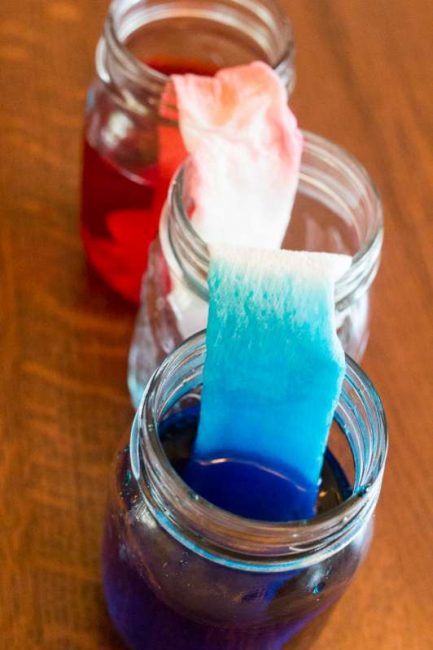
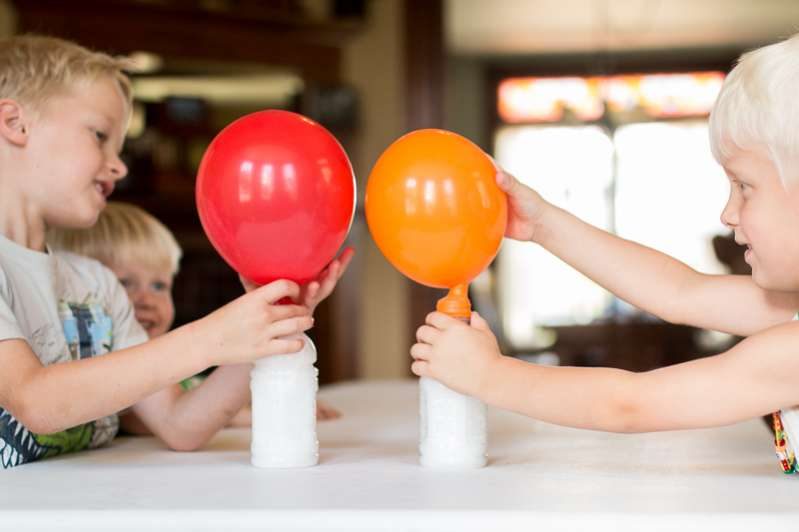
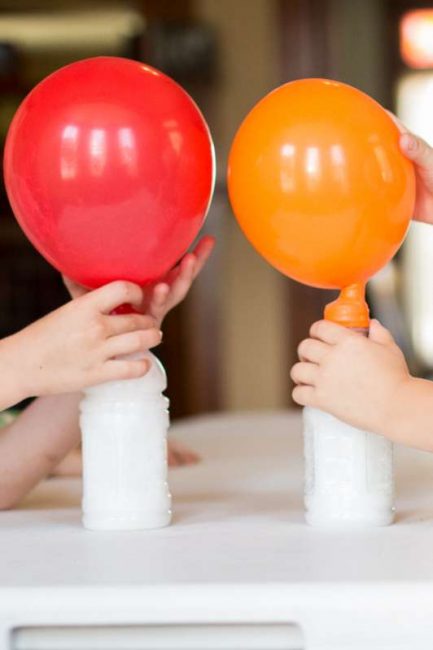
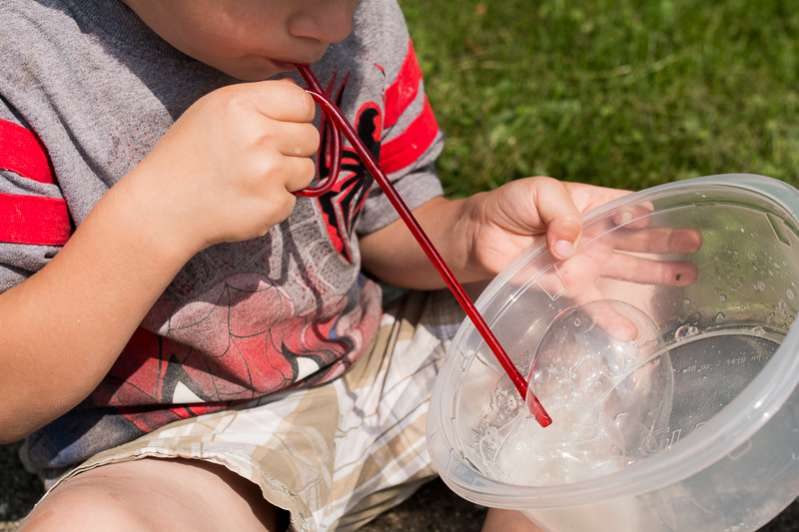
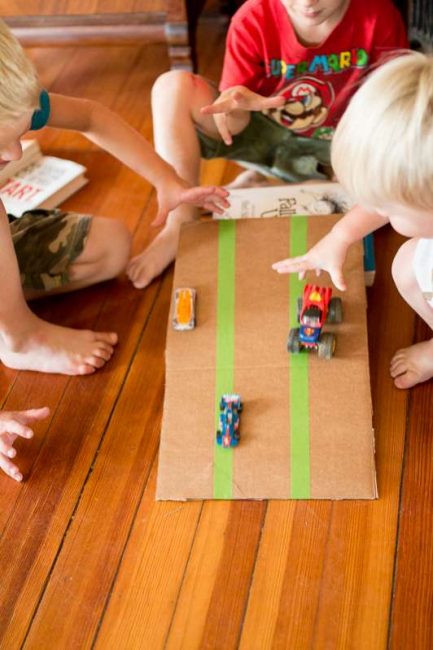
No comments:
Post a Comment